
-
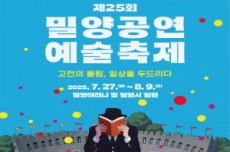 밀양시, 국내 대표 여름공연 예술축제, 밀양공연예술축제 27일
밀양시, 국내 대표 여름공연 예술축제, 밀양공연예술축제 27일

-
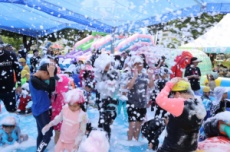 아이들과 함께하는 시원한 여름...보은군, 물놀이장 3곳 운영
아이들과 함께하는 시원한 여름...보은군, 물놀이장 3곳 운영

-
금산군, 천년장수 은행열매를 더한 제5회 금산삼계탕축제 18일

-
 영동 과일나라테마공원 ‘영동 물놀이장’과 ‘영동풍류 피크닉’
영동 과일나라테마공원 ‘영동 물놀이장’과 ‘영동풍류 피크닉’

-
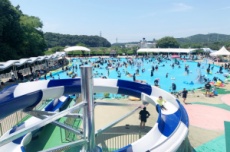 정읍시, “더위야 가라” 칠보물테마유원지 19일 본격 개장
정읍시, “더위야 가라” 칠보물테마유원지 19일 본격 개장

-
봉화군, 무더위 타파! 봉화은어축제 오는 7월 26일 개막

-
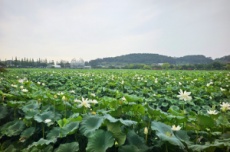 무안군, 회산백련지, 순백의 백련 본격적으로 개화
무안군, 회산백련지, 순백의 백련 본격적으로 개화

-
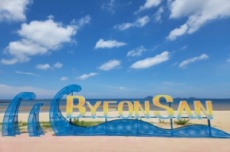 부안군, 체류형 관광으로 여름 피서객 맞이 준비 완료
부안군, 체류형 관광으로 여름 피서객 맞이 준비 완료

-
정읍에 전국 최고 어린이 놀이터 개장, 16일 부터 시범 운영

-
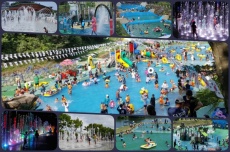 해남군, '더위엔 물놀이지' 해남군 물놀이장 속속 개장
해남군, '더위엔 물놀이지' 해남군 물놀이장 속속 개장


[K-Tour Top 10] Suncheon - Seonamsa Temple
Seonamsa Temple was first made by a Buddhist monk named Ado in 7th year (529) of King Seong of Baekje Dynasty and named Biroam Hermitage. Among old temples in Korea, Seonamsa Temple is one of the temples that preserves its original form well. Together with Tongdosa Temple in Yongsan, Buseoksa Temple in Yeongju, Bongjeongsa Temple in Andong, Beopjusa Temple of Boeun, Magoksa Temple of Gongju, and Daeheungsa Temple in Haenam, Seonamsa Temple is designated as ‘Sansa, Buddhist Mountain Monasteries in Korea’ in UNESCO World Heritage.
-
Seonamsa Temple
Seonamsa Temple
Seonamsa Temple was first made by a Buddhist monk named Ado in 7th year (529) of King Seong of Baekje Dynasty and named Biroam Hermitage. Among old temples in Korea, Seonamsa Temple is one of the temples that preserves its original form well. Together with Tongdosa Temple in Yongsan, Buseoksa Temple in Yeongju, Bongjeongsa Temple in Andong, Beopjusa Temple of Boeun, Magoksa Temple of Gongju, and Daeheungsa Temple in Haenam, Seonamsa Temple is designated as ‘Sansa, Buddhist Mountain Monasteries in Korea’ in UNESCO World Heritage.
The entrance of the temple is formed along the valley. Since the valley’s water doesn’t dry even in the winter, you can hear the sound of water coming from the valley as you walk along. About 400 meters away from a ticket office, there are two stone pillars placed on the left and right sides. The stone pillar on the right says ‘禪敎兩宗大本山(Sungyoyangjong Daebonsan)’ and the stone pillar on the left says ‘曹溪山仙巖寺(Chogyesan Seonamsa)’. These pillars tell visitors of the entrance to the temple.
After passing the stone pillars, walk along a crooked path, and you will see a beautiful rainbow bridge. That is Seungseongyo Bridge. This bridge has a semi-circular arch shape. When seen from below, the image of bridge reflected on the water connects with the bridge to form a circle. Since the bridge was built by making lower granites narrower, centripetal force of granites makes the bridge still and firm.
According to a monument for restoration of Seonamsa Temple, Seungseongyo Bridge was first made by a Buddhist monk named Hoam at the year of King Sukjong during Joseon Dynasty. When Seonamsa Temple was restored after the fire during Japanese Invasion in 1597, Seungseongyo Bridge was made together. From old times, Buddhism regarded building a bridge as the act of building up a huge virtue.
Interestingly, there is a dragon head that decorates under the bridge. In Buddhism, dragon is regarded as a symbol of the guardian protecting the Buddhism. So, dragon has a meaning of keeping off the evil ones in Buddhism. That’s why the dragon head decoration in the stone bridge is mainly found on the temples, too.
Seungseongyo Bridge’s dragon head has a special feature. It is said that three brass coins have been hanging on the mouth of the dragon since the bridge was first made. When making the bridge, the Buddhists donated for the bridge and 3 brass coins were left. To show the intention of not wasting the money donated for the bridge, three remaining brass coins were put on the mouth of the dragon.
As you pass Seungseongyo Bridge, you will see a two-storied pavilion named Gangseonru Pavilion. It’s the first building you see at Seonamsa Temple. Considering that Iljumun Gate (One Pillar Gate) is generally the first gate of the temple, it’s a unique temple arrangement. Looking at Gangseonru Pavilion closely, there is a small stone bridge on the ground. This stone bridge is placed on a small stream flowing to the valley and two pillars of the pavilion are also under the water stream. That makes the pavilion embrace the nature as it is.
You need to walk another 300 meters to see Iljumun Gate of Seonamsa Temple. Iljumun Gate of Seonamsa Temple has two signboards. The front says ‘曹溪山仙巖寺(Chogyesan Seonamsa)’ and the back says ‘古淸凉山海川寺 (Gocheongnyangsan Sanhaecheonsa). Seonamsan Temple was damaged from fire several times in 1600s and 1700s. For this reason, Chogyesan Mountain was called ‘Cheongnyangsan Mountain’ by using the Chinese characters of Cheong (淸, blue) and Ryang (凉, cool). Both characters use Byeon (氵, water) and the name Haecheonsa Temple also uses the Chinese character, Cheon (川, stream). These Chinese characters were used to wish for preventing the fire and there isn’t any stone lantern at Seonamsa Temple because Seonamsa Temple went through fire damages several times.
The main temple, Daewoongjeon, of Seonamsa Temple has an old but beautiful image because the discolored dancheong is kept as it is without coloring it again. The original main temple was lost during the fire and the present main temple was re-built in 1824. At the yard of the main temple, there are two three-storied stone pagodas and these identical stone pagodas were made by using the same technique.
One of the places you shouldn’t miss at Seonamsa Temple is Wontongjeon Hall. This hall is located between pavilions located at the back of Daewoongjeon. Wontongjeon Hall was first made in 1600 and it was last remodeled in 1824. The frames of two entrance gates are engraved of peony with rich flowers and leaves. Although the gates lost their original color, the gates still keep their beauty. Also, bottom parts are engraved with two rabbits pounding rice and two three-legged crows.
Seonamsa Temple’s ‘Dwitgan’ is also designated as the cultural heritage. ‘Dwitgan’ means a restroom. From the front side, it seems like a semi-basement with few downstairs. From the back side, it’s a two-storied building. The T-shaped restroom is quite big. Also, the entrance’s top part with beautiful curves has a signboard engraved with ‘Gandwit’ and you need to read from the right side.
In spring time, Seonamsa Temple changes into pink clothes of plum blossoms. About 50 plum trees that are 350 to 650 years old grow around Wontongjeon Hall and Gakhwangjeon Hall. Among these trees, the plum tree located right behind Wontongjeon Hall is named ‘Seonammae’. This tree is over 600 years old. The plum trees at Seonamsa Temple spent the long history together.

 트래블아이 한마디
트래블아이 한마디
1,000-Year-Old Temple with Scent of Plum Blossoms - Seonamsa Temple
글 트래블투데이 강수련 취재기자
발행2021년 05월 25 일자
함께하는 트래블피플
- 트래블피플이란?
- 트래블피플에게 주어지는 혜택
해당 콘텐츠에 대한 기여도
 기사+사진
기사+사진
 기사
기사
 사진
사진
 오류수정
오류수정
트래블파트너
참여한 트래블파트너가 없습니다.
주재기자
참여한 주재기자가 없습니다.
파워리포터
참여한 파워리포터가 없습니다.
한줄리포터
참여한 한줄리포터가 없습니다.








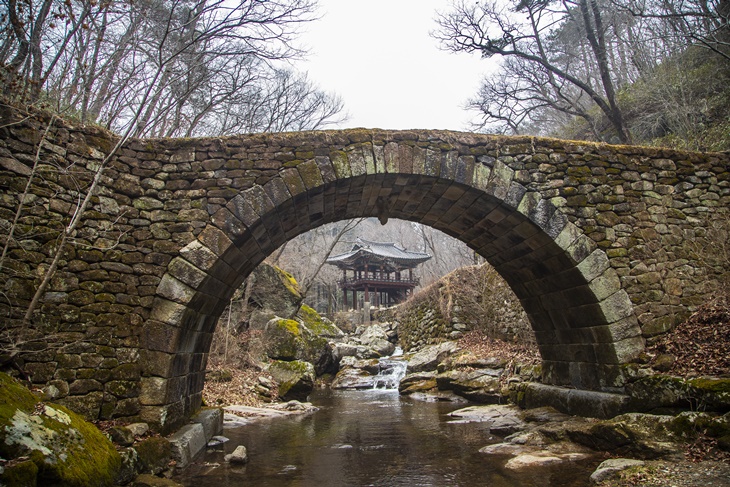






 아이들과 함께하는 시원한 여름
아이들과 함께하는 시원한 여름





